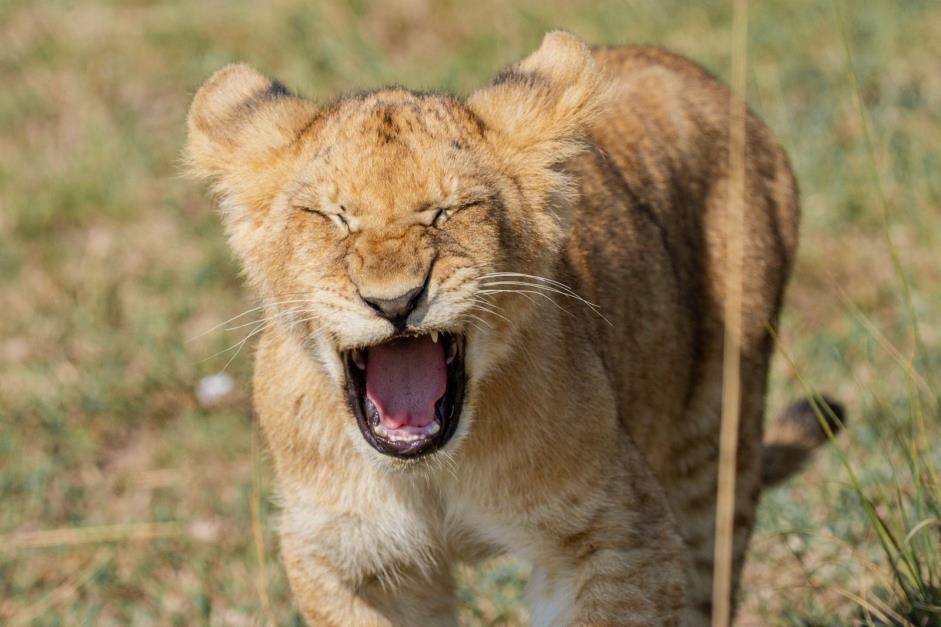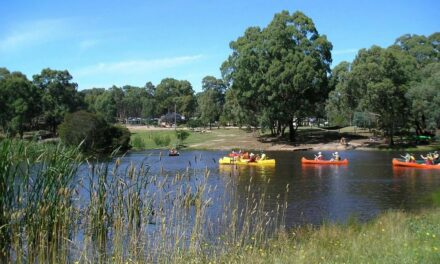Raquel Stevens
Whether it’s teeing off at the iconic Old Course at St Andrews in Scotland or trekking to the ancient citadel of Machu Picchu in South America, most of us have a travel bucket list. In today’s era of viral travel trends, some truly extraordinary destinations are capturing global attention and quickly rising to the top.
I recently travelled to Kenya on a golf trip, yes, golf!!! We experienced first-hand why Africa regularly tops the list.
Tick the box if you are a passionate golfer, animal lover, want to meet people, and are up for a life changing experience. These are four reasons why you must add this to your bucket list.
One: Fabulous Golf Courses
Karen Golf Course: It was a delight to play at this magnificent course which is nestled against the scenic backdrop of the Ngong Hills. Lined with a rich variety of trees and indigenous forest, its picturesque landscape is as captivating as the game itself. Karen is also known as the premier club of choice for Kenya’s elite — including wealthy residents, politicians, and dignitaries.
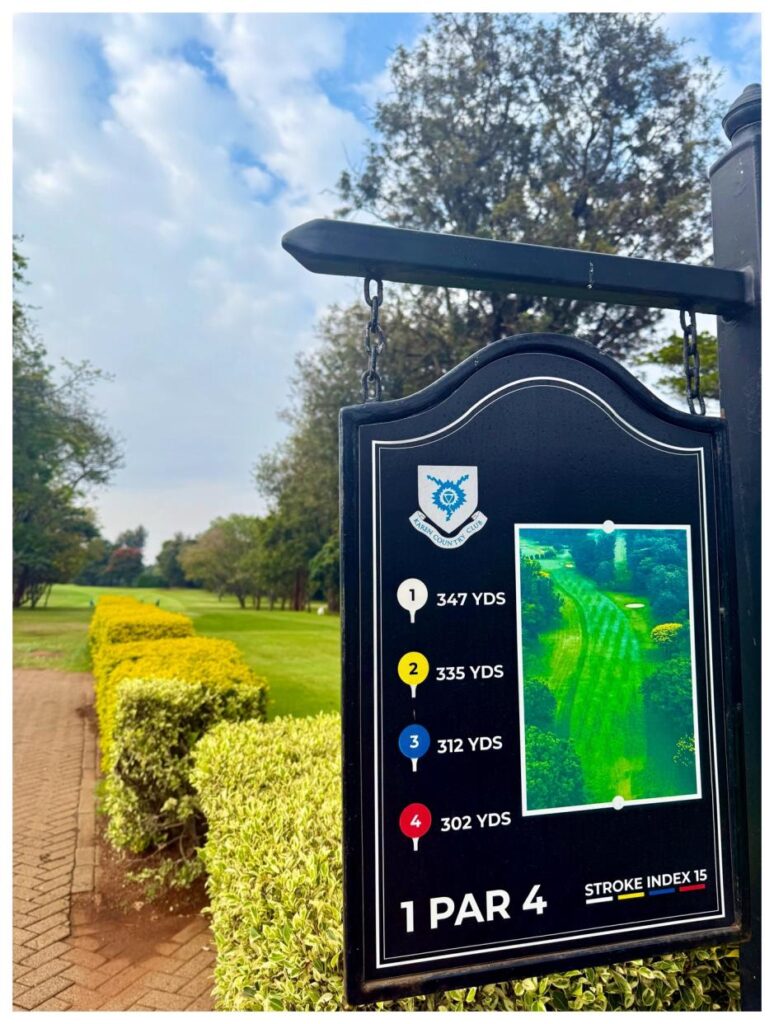
After our round, the Lady Captain graciously introduced herself and invited us to join the members for wine and nibbles overlooking the 18th green — a warm and memorable touch. While photography of members was not permitted, I did manage to discreetly capture a few shots out on the course.
Muthaiga Golf Course: Often referred to as the “Home of Golf” in Kenya, Muthaiga lives up to its prestigious reputation and elite membership. In true fashion, we were bumped from our original tee time to accommodate a group of politicians eager to play — a fitting reminder of the course’s high-profile allure.
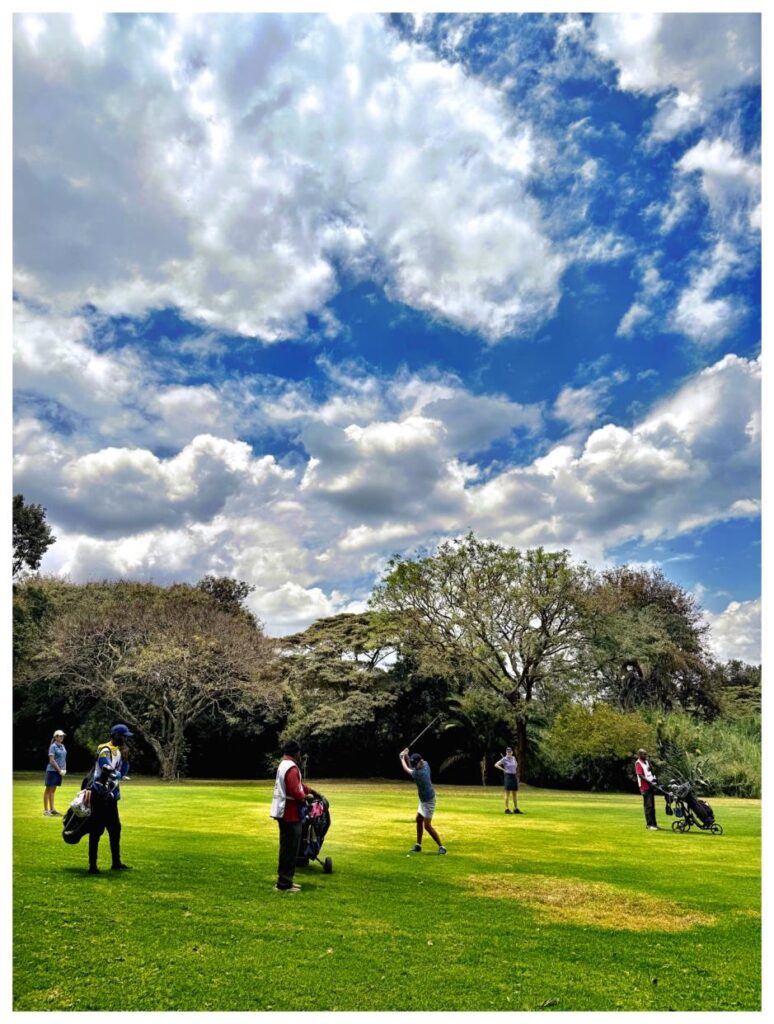
Every hole on the course is picture-perfect, offering a scenic and memorable round from start to finish.
The pro shop was just as impressive. Before we even teed off, several of us had already indulged in some retail therapy — stocking up on hats, pins, and their signature green-and-white striped logo umbrella. At just $30 Australian dollars, it was a stylish bargain we couldn’t resist.
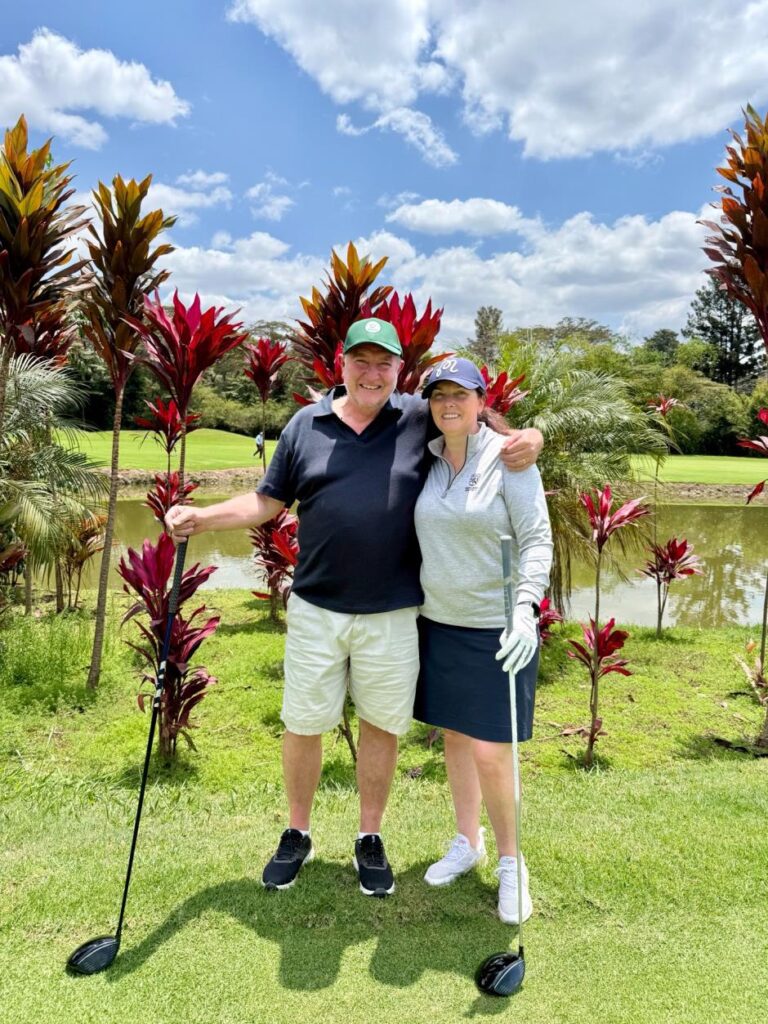
Sigona Golf Course: This was golf on another level — challenging, strategic, and unforgettable. The signature 3rd hole, a dramatic par 3, truly stole the show. It demands precision from the tee: a carry over water, followed by a steep ascent onto a narrow platform ringed with bunkers — and that’s just the beginning. From there, you’re faced with one final climb to reach the green, guarded yet again by more bunkers.
It’s no wonder this hole draws a peanut gallery — it’s a test of nerves and skill and thrilling to watch unfold.
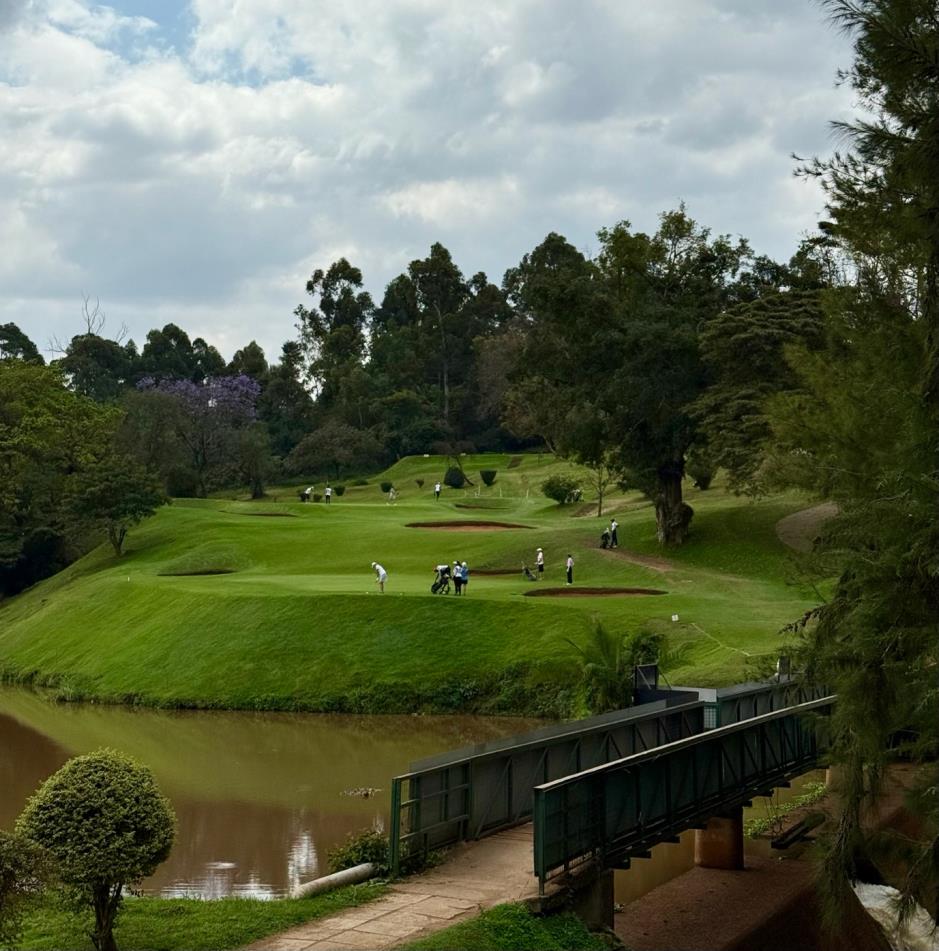
Vipingo Ridge: This was hands-down the crew’s favourite course — and for good reason. From start to finish, it delivered a one-of-a-kind experience that went far beyond golf. Wildlife seemed to be on speed dial, with animals appearing around nearly every corner, adding a surreal charm to the game.
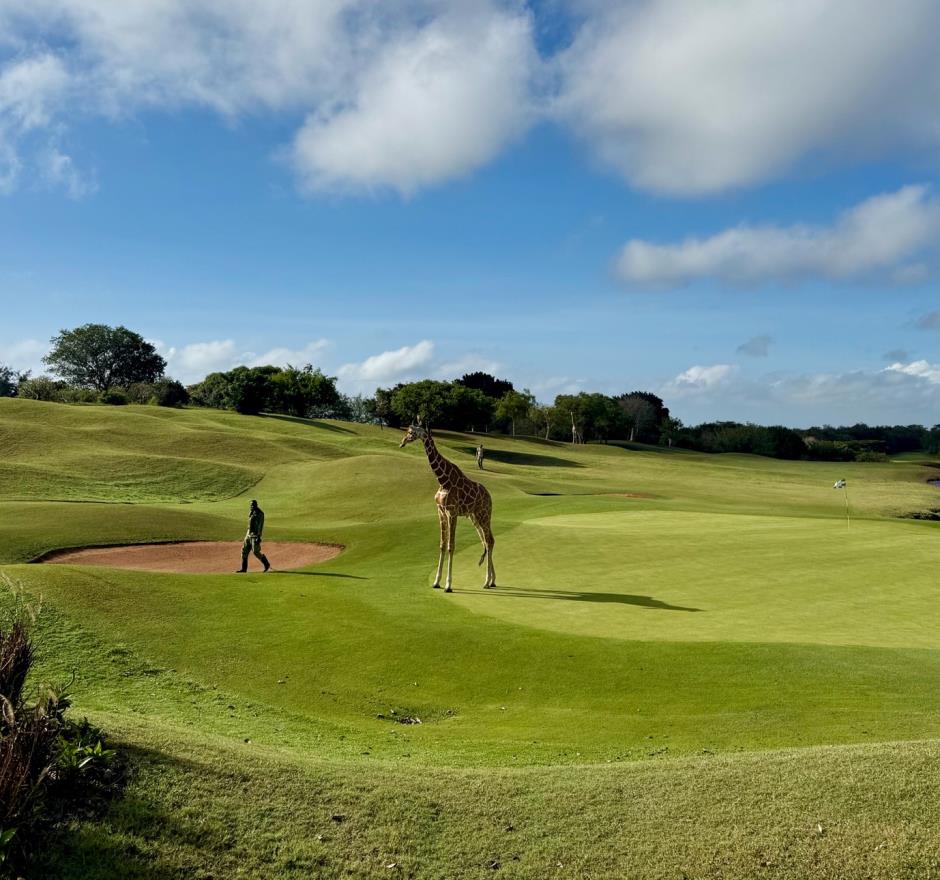
The course itself is no walk in the park — challenging yet rewarding, with each hole offering something distinct. I posted a photo of a giraffe strolling across the 9th green, and so many people assumed it was AI-generated. WRONG. It was 100% real — and that’s the magic of Vipingo Ridge. You truly must see it to believe it.
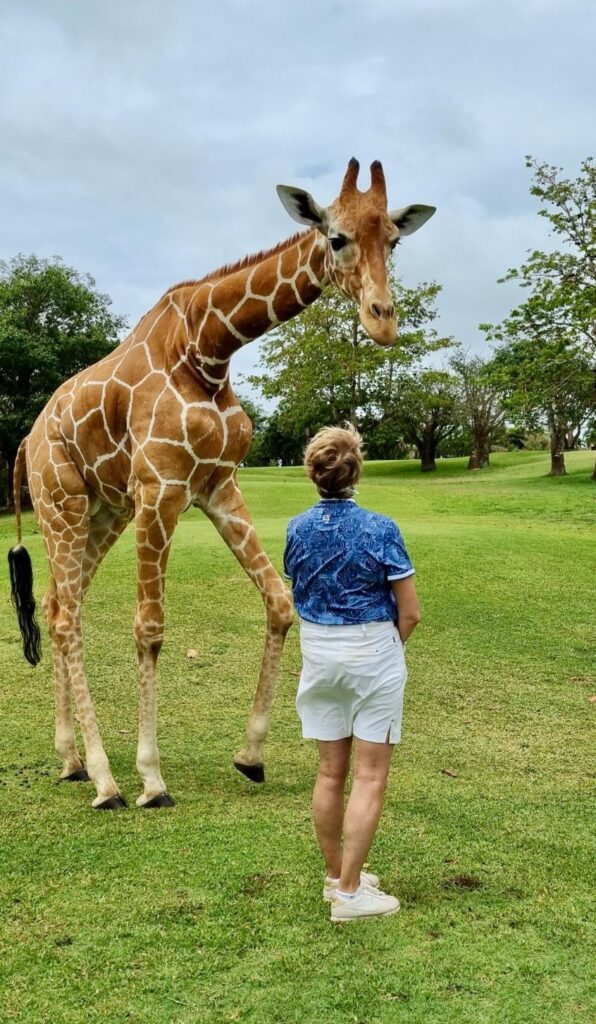
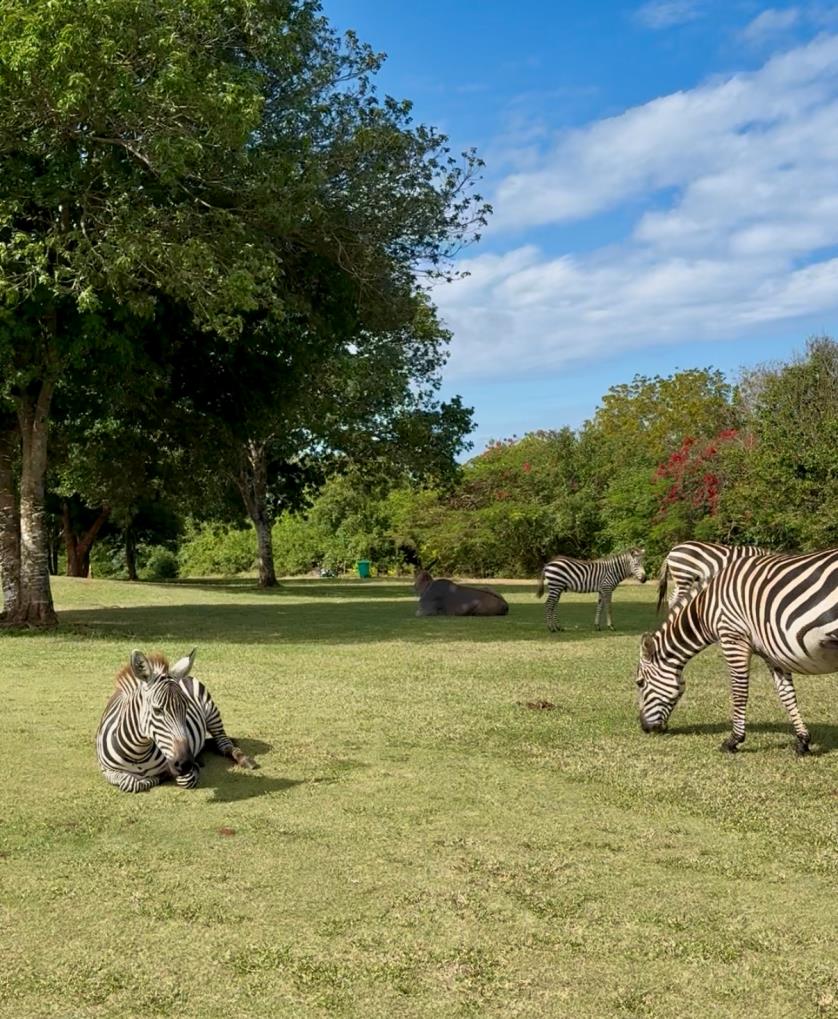
Highlight: Caddies That Coach: One standout feature across all the courses was the inclusion of caddies — and not just bag carriers, but genuinely skilled players and on-course coaches. It was some of the best guidance I’ve ever received during a round. Three out of my four caddies played off handicaps under 15, and their insights were game-changing.
At Vipingo, my caddy Fatima was especially memorable. She was completely invested in helping me improve, offering tips and encouragement every step of the way. I lost count of how many times she passionately reminded me, “Macho quanpira!” — which, as she explained with a smile (and a little exasperation), means eyes on the ball.
On a few too many occasions I also heard her giggle, “Napata Sheeda” which means “terrible shot”.
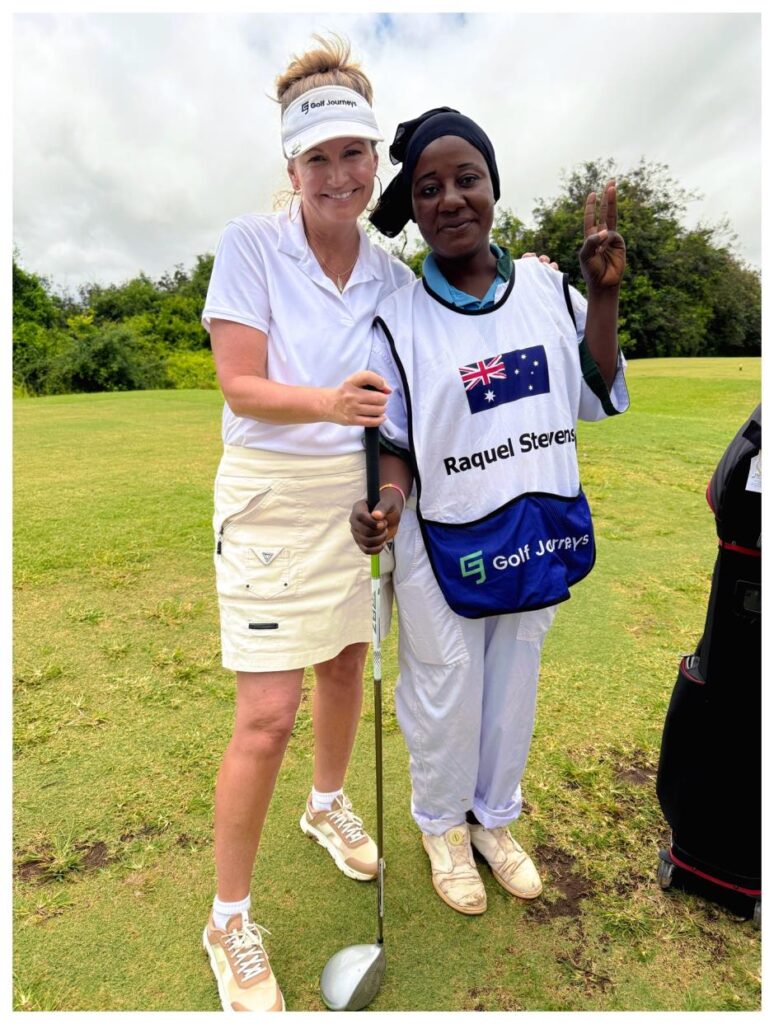
Two: Finding the Big Five… and the Ugly Five
Everyone talks about spotting the Big 5 — lion, leopard, elephant, rhinoceros, and buffalo — and yes, we found them all. But we took just as much delight in hunting down what we called the Ugly 5.
- Wildebeest – Despite their looks, they’re smart, with an excellent sense of smell. Zebras often follow them, trusting them to find the freshest grass.
- Warthogs – Always entertaining, especially as they have poor memory. They can be chased by a lion, and within 15 seconds forget why they are running.
- Marabou Stork – Nicknamed “the undertakers” for their hunched posture and bald heads — and because they feed on carrion.
- Vultures – Not winning any beauty contests either, and usually found loitering around a kill, waiting their turn.
- Hyenas – The cleanup crew of the savannah, always ready to finish off what others leave behind.
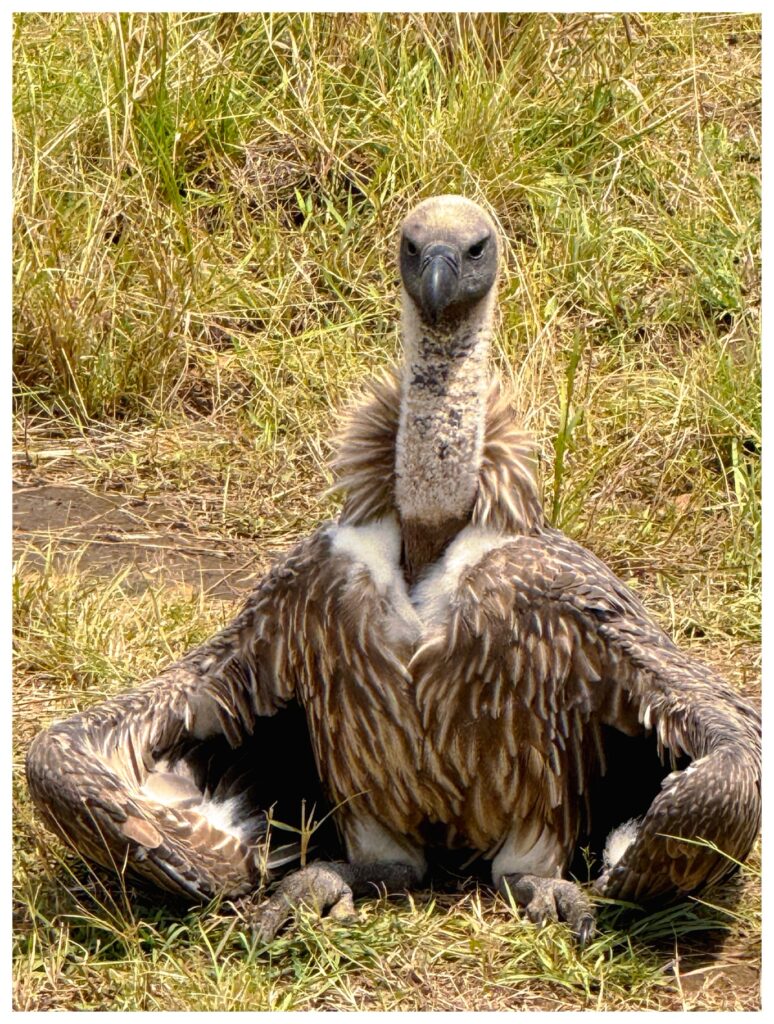
Each day, we held a friendly competition for the best wildlife photo. The animals were incredible, and the sheer abundance was something else — but nothing compared to the sight of a Kenyan sunset, silhouetting the iconic Balanite trees.

One of our guides, Tony Yegon, was a driving encyclopaedia, we flooded him with questions, and we devoured his answers.
There were countless highlights, but one of the most memorable came on our second day: a baby boom on the plains. We spotted young elephants, playful lion cubs, and tiny zebras taking their first, wobbly steps. It was pure magic — a heartwarming reminder of the wild’s raw beauty and new beginnings.
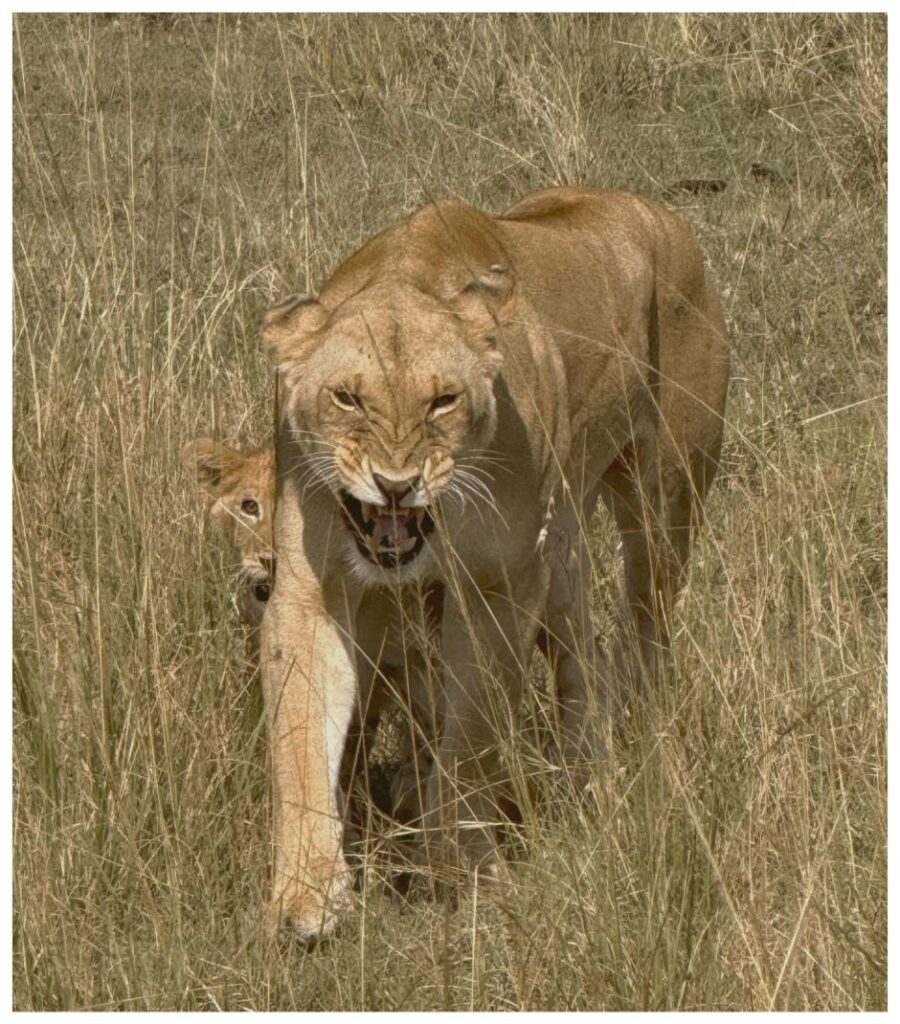
Just when we thought we’d seen it all, Day 4 delivered what we dubbed “The Day of the Kills.”
It began with a leopard stealthily taking down an impala, then effortlessly dragging its prize up a tree to feast in peace. Not long after, we witnessed two male lions ambush a baby hippo along the riverbank — a rare and powerful display of strength and strategy. And then came the grand finale: a cheetah, moving with breathtaking speed, took down a gazelle right before our eyes.
Three of Africa’s iconic big cats — leopard, lion, and cheetah — each delivering a live-action spectacle we’ll never forget.
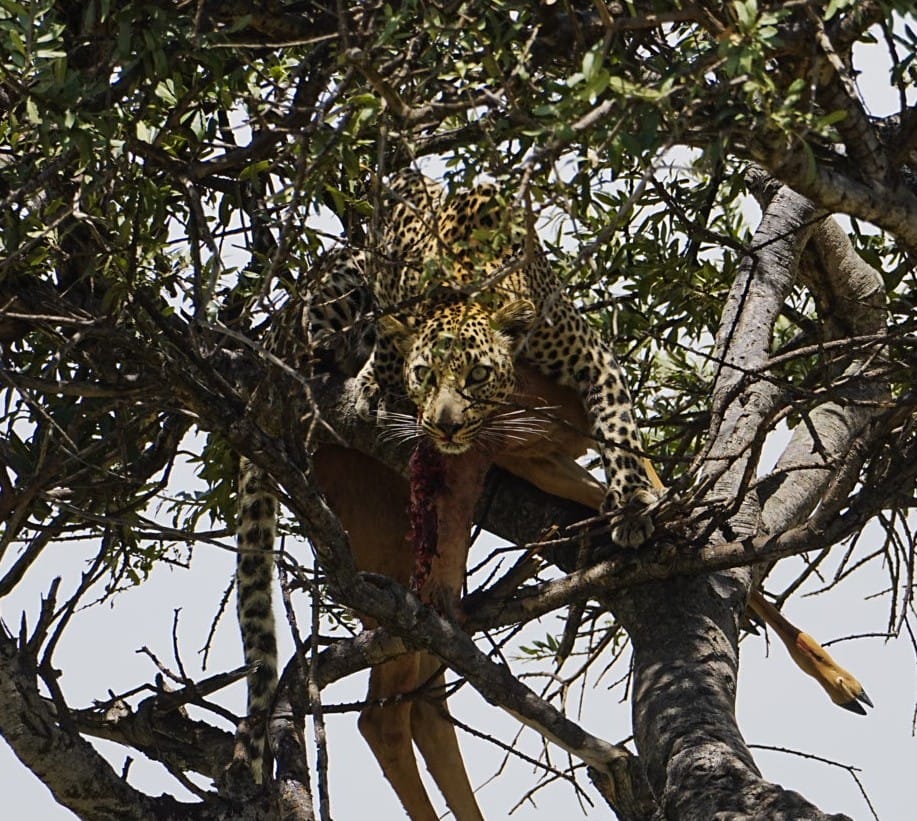
Highlight: Finding the Elusive Leopard: One of the Big Five — and arguably the hardest to spot — the leopard is the true master of camouflage. But our guides didn’t disappoint.
Word came through of a leopard resting beneath an acacia bush, and the excitement was instant. What followed was nothing short of hilarious: a full-blown safari-wide game of “Where’s the Leopard?” Each jeep had its own strategy, with voices crackling across the open plains. From our vehicle, we used the clock method, “Look at 12 o’clock — Now go a metre to the left — see the really green bush, it’s hiding in there!”
And sure enough, there it was — draped in the shade, perfectly still, and utterly magnificent. Its eyes, golden and piercing.
For a moment there we had to remind ourselves we were actually on a golf tour.
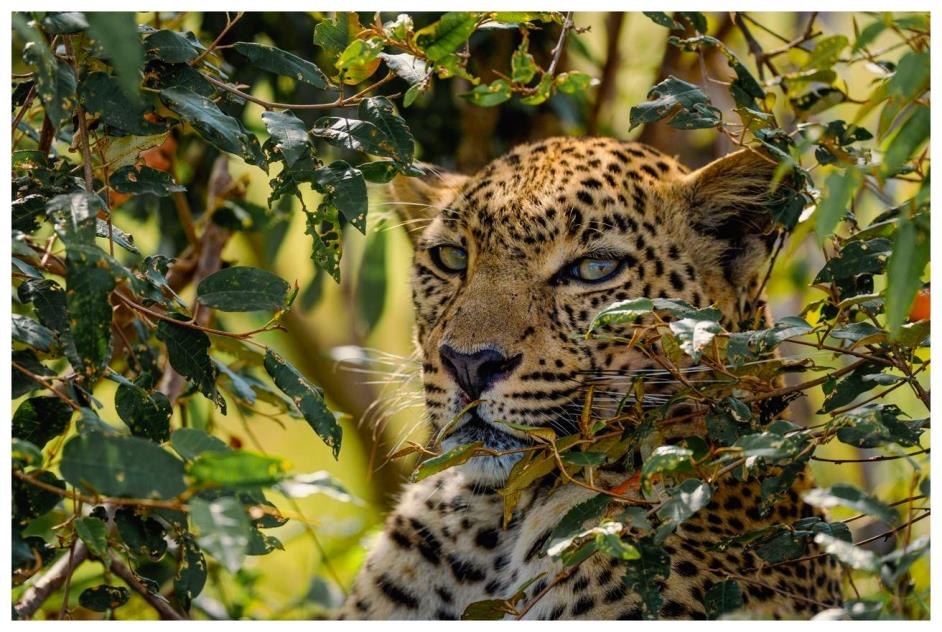
Three: Making a Difference
One of the most humbling experiences for our group was visiting Kibera, Africa’s second-largest slum, home to over one million people. Through a powerful cultural immersion organised by The Mirror of Hope — an incredible charity dedicated to creating opportunities through education — we gained a deeply moving perspective on life here.
Accompanied by my wonderful guide, Purity, we purchased food and helped prepare a meal for a family of six. I also donated some children’s books and had the joy of reading to young Magesh, a bright-eyed seven-year-old. His excitement as he learned about kangaroos and the kookaburra’s famous laugh was unforgettable — a beautiful reminder of the power of education and connection.
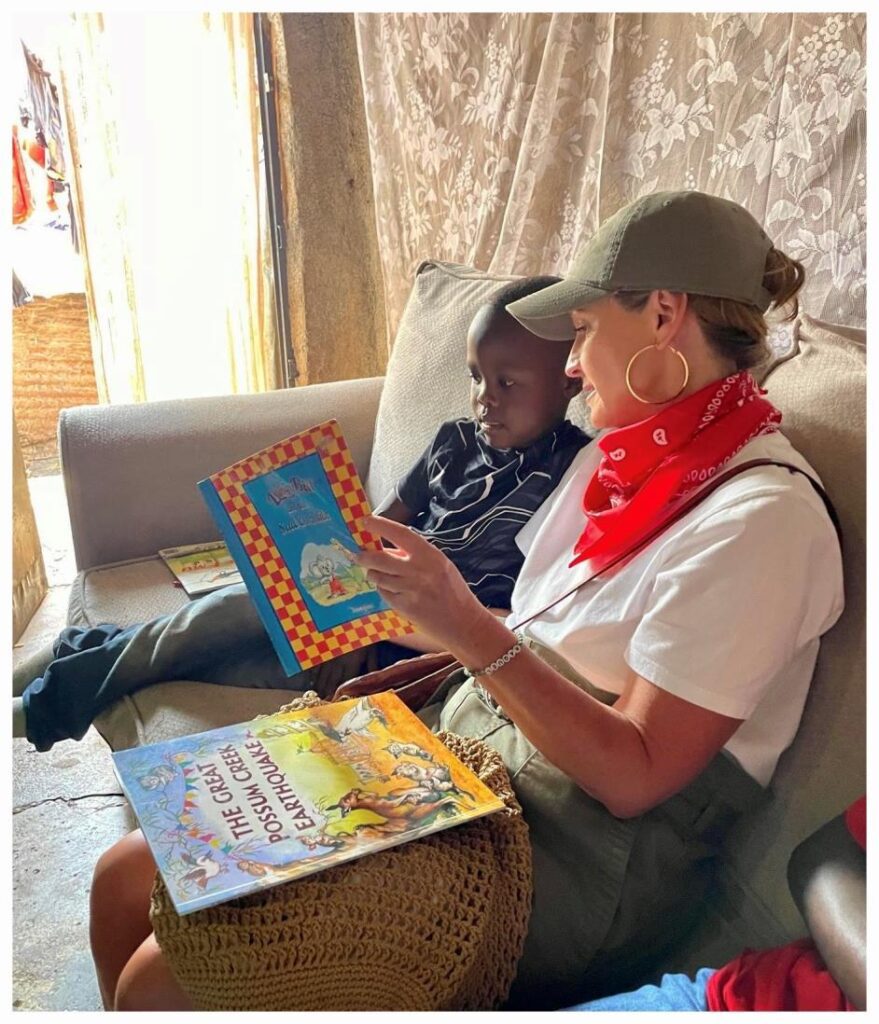
We shared a meal of Ugali, a traditional local dish, accompanied by scrambled eggs, sautéed kale, fresh chopped salad, and fried fish — all delicious and made with care. Purity, who grew up in the slums herself, now teaches Fashion and Design to teenage single mothers. In her own words, “Here in the slums, there is talent, there is hope — we just need the platform to be seen.”
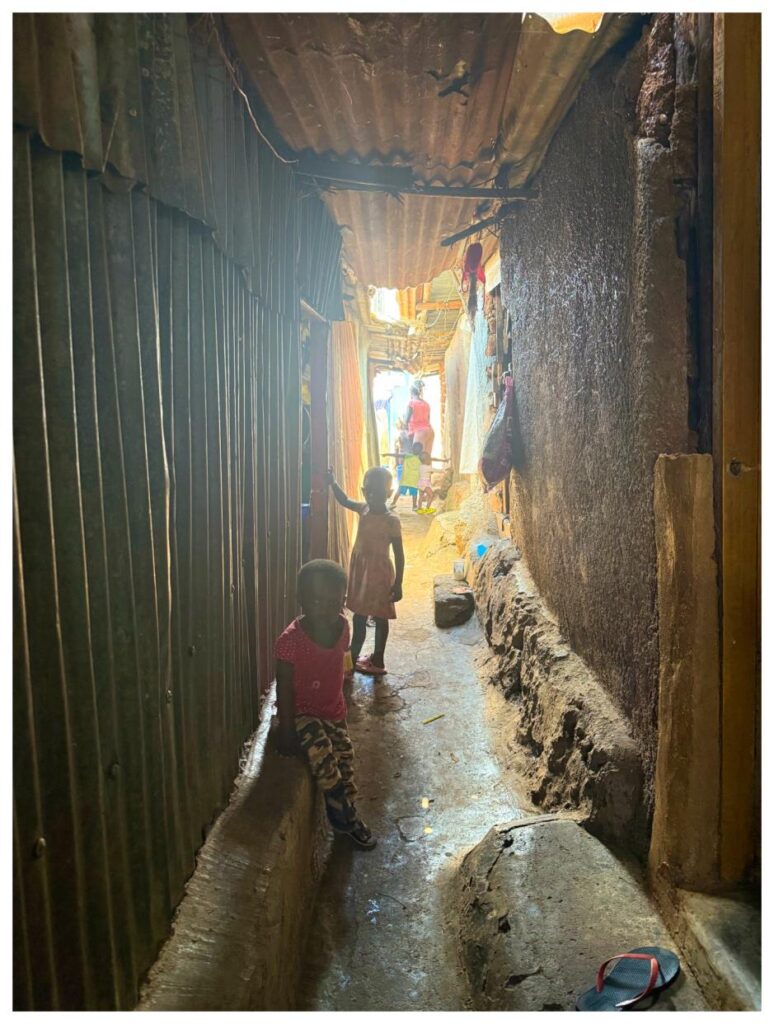
The Mirror of Hope began its mission in 2010 and has since sponsored over 500 children. Remarkably, it costs just $1,000 to provide a child with a full education — the equivalent of skipping four coffees a week. A small investment that changes lives.
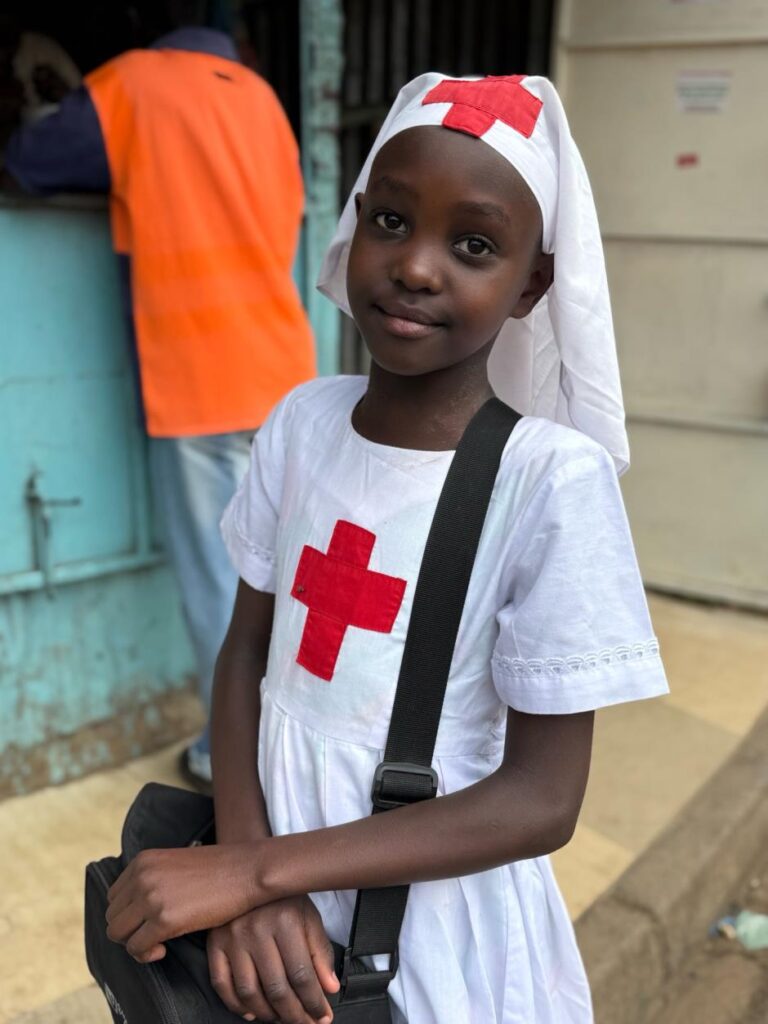
Four: Forging Friendships far Beyond the Fairways
It wasn’t only the golf or animals that has made this a truly unforgettable experience, it was the warmth of the African people. While service can move at a leisurely pace, and the occasional order is misunderstood, it’s always delivered with a beautiful Kenyan smile.
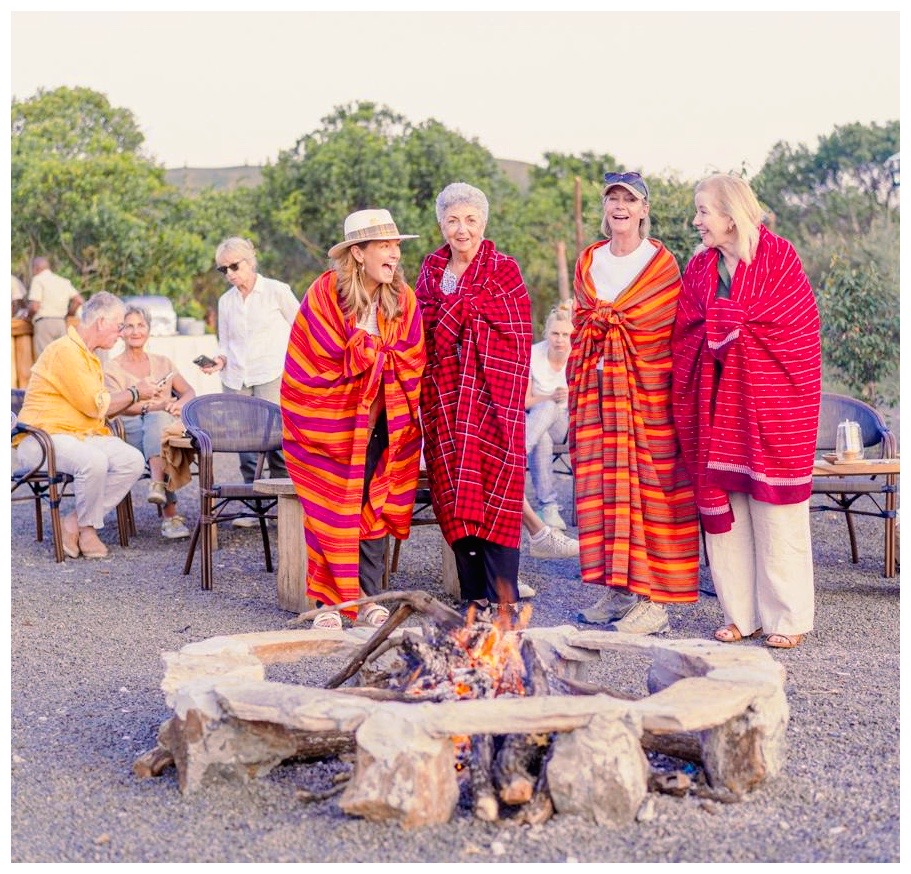
One of my favourite parts of the trip was creating a personal Swahili phrasebook. Each day, a staff member or one of our guides would teach me a new word or phrase. Here are a few of my favourites:
- “Asante Sana” — Thank you very much. I found that making the effort to speak their language made us feel even more welcome.
- “Pole, Pole” — Slowly, slowly. This perfectly sums up the rhythm of African time. Here, life moves to its own beat, and we could all benefit from slowing down, soaking it all in, and truly enjoying the experience.
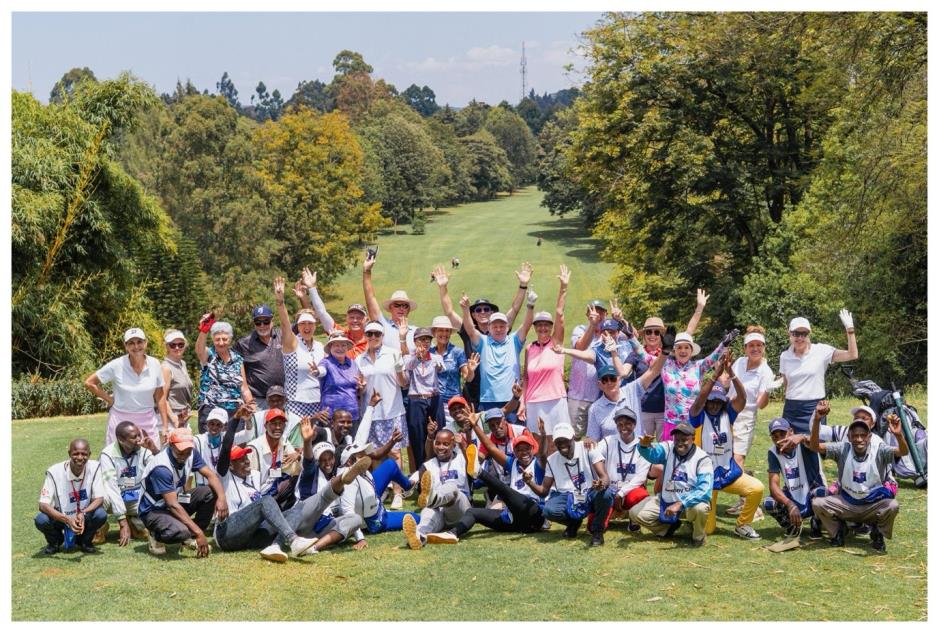
This experience will stay with us long after the final roar of the lions in the Maasai Mara… and long after the cheers from those who successfully cleared the water on Hole 3 at Sigona.
Raquel Stevens is a former broadcast journalist, golf fanatic and now divides her time between writing for the Wombat Post and touring with Golf Journeys.

